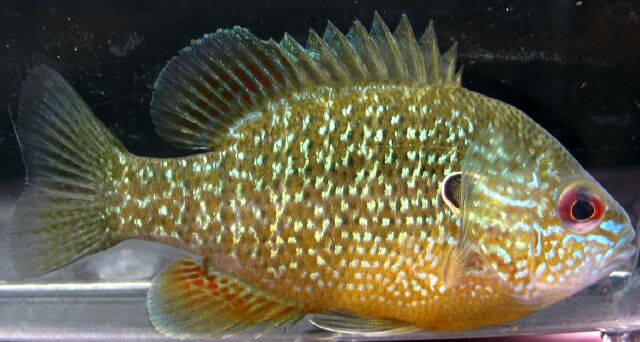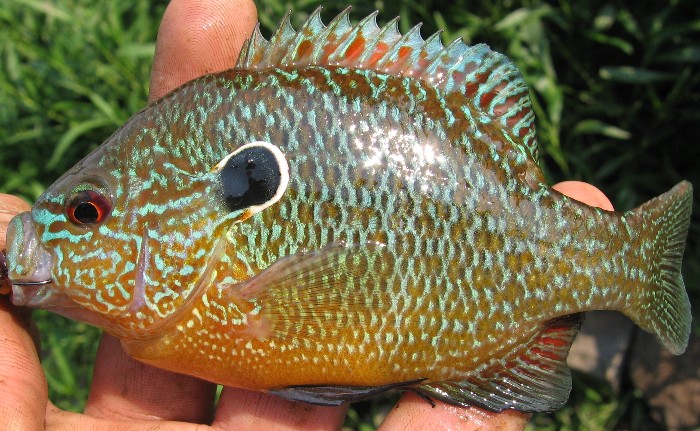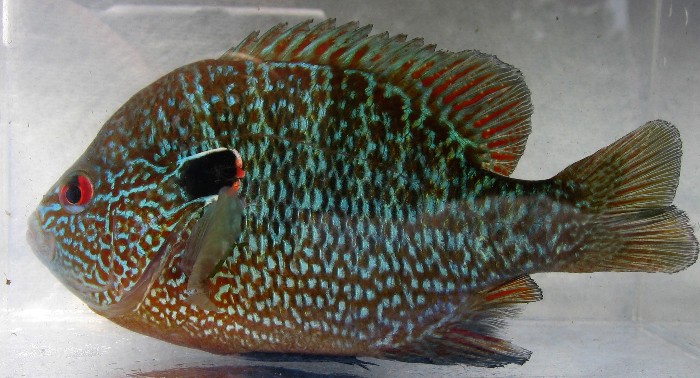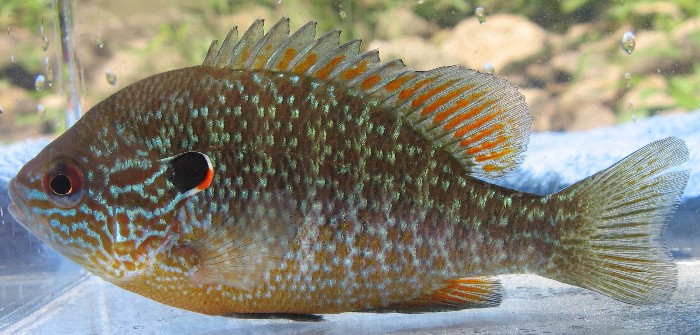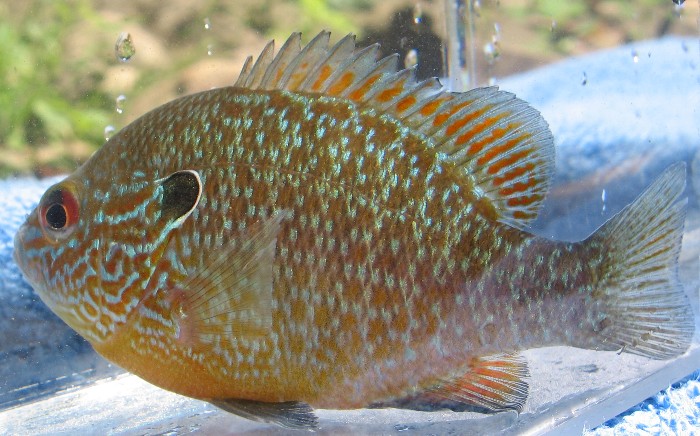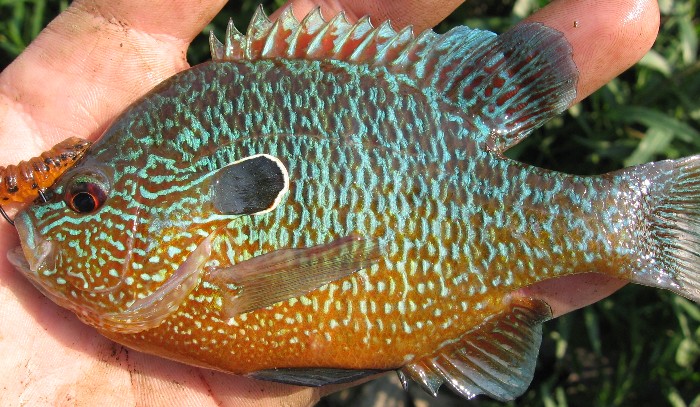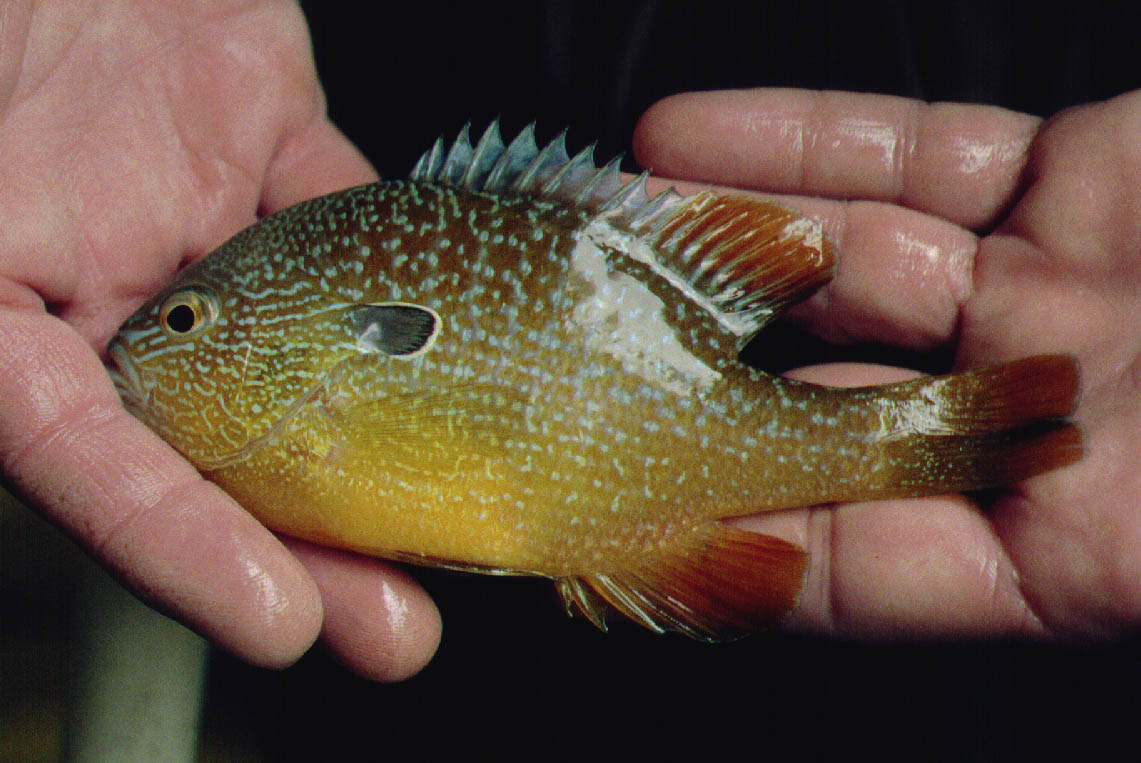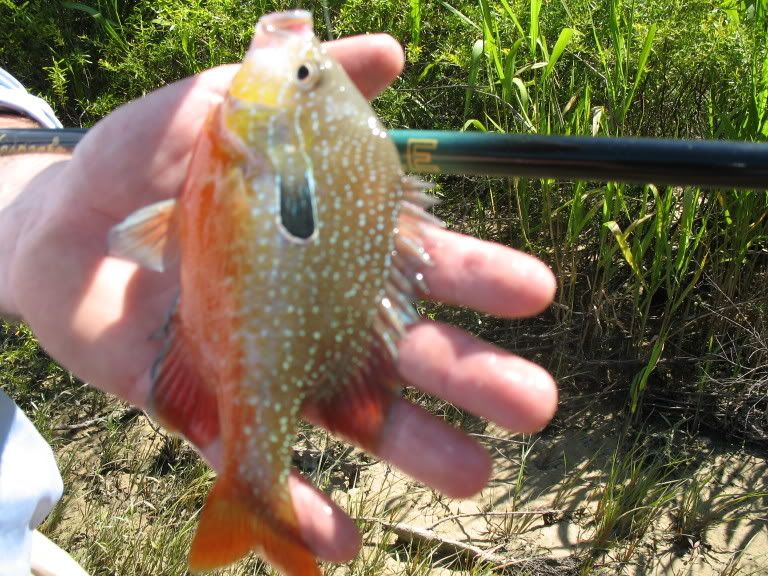Lepomis megalotis vs. peltastes?
#1
 Guest_dsmith73_*
Guest_dsmith73_*
Posted 30 August 2006 - 04:18 PM
While the authors of the MI book, apparently make a good case for it's elevation to full species level, it has not been formally recognized. It appears that the AFS list of accepted names is currently reviewing the available literature and this may become official in the near future.
I look forward to other peopl's opinions on this. Should it be split or not? Where is the geographical dividing line? What role should gene work play in the separation?
#2
 Guest_wolfie8000_*
Guest_wolfie8000_*
Posted 31 August 2006 - 07:05 AM
http://animaldiversi..._megalotis.html
Clear at the bottom of the page all it says is;
Some authorities split the species into two subspecies. The central longear sunfish, L. megalotis megalotis, is generally found in the southeastern portion of the range, on the east side of the Mississippi River, and the southern half of Ohio and Pennsylvania. The northern longear sunfish, L. megalotis peltastes, on the other hand, is found primarily in the northwest portion of the longear’s range, from Wisconsin, Minnesota, northern Ohio through Michigan and into Ontario.
Trautman (1957) distinguishes between the two subspecies by saying the northern longear sunfish, L. megalotis megalotis, is generally smaller, with a less pronounced opercular flap that is horizontal in orientation. The central longear, L. m. peltastes, is generally larger and has a longer opercular flap at a 45° angle, posterior end higher.
#3
 Guest_smbass_*
Guest_smbass_*
Posted 13 November 2006 - 12:12 AM
#8
 Guest_smbass_*
Guest_smbass_*
Posted 13 November 2006 - 09:57 AM
#9
 Guest_fundulus_*
Guest_fundulus_*
Posted 13 November 2006 - 09:58 AM
There has been some debate on other boards about the splitting or lack their of regarding the longear sunfish. There are those, including the recent MI Atlas, that consider L. peltastes as a distinct species. There are others, most of the rest of the country, that aren't quite so sure as of yet.
While the authors of the MI book, apparently make a good case for it's elevation to full species level, it has not been formally recognized. It appears that the AFS list of accepted names is currently reviewing the available literature and this may become official in the near future.
I look forward to other peopl's opinions on this. Should it be split or not? Where is the geographical dividing line? What role should gene work play in the separation?
I'm still not sold that with longears we're looking at something besides geographically graded variation. One would expect variation within and between populations of any species. Since longears are so widespread, it makes sense that there are well-defined regional populations. But like the man said, by all means let's look at DNA, and I'm not even a real gene jockey!
#10
 Guest_teleost_*
Guest_teleost_*
Posted 13 November 2006 - 11:04 AM
too skipjacks picture... that looks a little different from ohio peltastes, it has no red on the opercle flap. Usually ohio fish have a large red mark at the back edge. I say usually intentionally because this is true about 95% of the time. The others some times look more like ohio centrals and have just a couple small blotches of red. Yours does not appear to have any red, what drainage is it from? Great lakes or Mississippi?
Skipjack's fish came from my home area (northern Illinois). I took a few shots of Longears from the Kankakee river and it's tributaries this spring and summer. All photos came from a 30 mile stretch of the river from the Indiana state line (Kankakee county) to and including portions of the Will county stretch of the river.
It's quite the mixed bag as far as the red on the opercle flap in this area. Some have partial red while others have no red at all. None have full red.
Below photos are random (some decent some bad). I included one side by side comparison of and odd looking fish.
#11
 Guest_fundulus_*
Guest_fundulus_*
Posted 13 November 2006 - 11:26 AM
#12
 Guest_teleost_*
Guest_teleost_*
Posted 13 November 2006 - 11:51 AM
does anyone have any female photos?
I'm guilty of not taking photos of females. At the end of this season I realized that I didn't take a single photo of a bluegill! I must admit that I often fail to photograph some of the more common/less colorful fishes. I'll make sure and change this next season.
#14
 Guest_smbass_*
Guest_smbass_*
Posted 13 November 2006 - 01:18 PM
The first picture is a 15 month old male northern that is a result of the following male and female spawning.
the next 2 are 2 pictures of the same male northern
this and the next are the same fish this one is when it was not spawning
next picture is a female northern durring spawning courtship (anyone who has spawned longears knows females chage color instantly durring courtship)
and last we have three male central longears
I guess I still need a female central picture.
One final thaught... I wonder if rather than being a distinct line where you switch from northern to central if it is not more of a continuem. so the further the populations are seperated the more distinct they look. for example my centrals still have a some what upward angle too the flap but they lack any large red blotches and have small ones. but the picture from alabama and fish I have seen in tennessee and missouri have no red and I have even seen some that have no white edge and just have a jet black flap.
#15
 Guest_teleost_*
Guest_teleost_*
Posted 13 November 2006 - 01:57 PM
The other thing I noticed is they seem somewhat large on your hand. Any idea of the length of some of the bigger ones? I have never found a northern in ohio over 5.5inches in total length.
This population seems to get roughly 6" total length with a very few getting any larger. Typical large fish would run about 5.5". I've noticed longears in Southern Illinois get much larger than up here but need someone to get in the water with me in the souther portion of the state. I did some scouting this summer and feel many good photos could be generated from a trip to the area.
#20
 Guest_smbass_*
Guest_smbass_*
Posted 13 November 2006 - 11:15 PM
Reply to this topic
2 user(s) are reading this topic
0 members, 2 guests, 0 anonymous users


